Home Hi-Tech Audio / Video / TV / Streaming ,,,,,
With the disappearance of traditional iPods from the horizon of Apple products, those who want to buy a product simply to listen to music on the move or in the car without having to changing phones has few alternatives: the market offers practically only Chinese-made players like this Dodocool DA106 or Sony's high-resolution players.
Cyber Layman has long tried one of the first, among the most appreciated by audiophiles looking for a product with a reduced budget but at the same time capable of reproducing high bit rate archives such as tracks in FLAC format.
 The contradiction remains that to listen to these devices at their best you need excellent headphones that will cost from 5 to 10 times the player but you can always start with a basic model and then improve as you refine your tastes and increase the ability to expense and finally let's not forget that this can be u An excellent source for an audio system in the car or at home, perhaps to revitalize that old system with good speakers that you have in the attic and that due to the times and the lack of up-to-date cassettes and LPs you want to feed good updated music.
The contradiction remains that to listen to these devices at their best you need excellent headphones that will cost from 5 to 10 times the player but you can always start with a basic model and then improve as you refine your tastes and increase the ability to expense and finally let's not forget that this can be u An excellent source for an audio system in the car or at home, perhaps to revitalize that old system with good speakers that you have in the attic and that due to the times and the lack of up-to-date cassettes and LPs you want to feed good updated music.
So welcome this Dodocool DA106 HiFi Music Player 8GB High Resolution which boasts the Hi-Res Audio brand like the most famous Sony models and an aluminum case that also makes an excellent service to the perception of the build quality.
Less than 60 Euro for a digital player even if with only 8 GB of memory (but expandable to 256 GB with a reasonable cost – but an excellent SD card 64 GB , in which to insert at least 100 of the LPs you listen to most often at very high resolution, you can find it at about 19 Euros ) are very few and if the actual quality matches the specifications we have a good successor to the iPod at a negligible cost.
The specifications
 The information sheet on the track being played
The information sheet on the track being played
The aluminum alloy body in dark gray color is equipped with a 2-inch LCD QVGA LCD display, with resolution 320 by 240 pixels; on board there is a DAC in Rockchip RKNanoD SoC with ARM Dual-core Cortex-M3 CPU while the integrated amplifier is a Texas Instruments TPA6130A2.
The audio formats supported are DSD64 , DSD128, DSD256 (.dff e.dsf), FLAC 192kHz / 24bit, ALAC 192kHz / 24bit, APE 96kHz / 24bit, OGG, WAV, MP3 and others (Also reads iTunes Match AAC 256 but does not read AIFF).
It has the possibility to make voice recordings in two modes with the internal High-fidelity microphone with 192kHz / 24PCM or standard. The FM radio can use custom presets and can be recorded directly from the radio on the internal memory and also transfer the recording.
The plate data are very respectable: 105dB and distortion: ± 0.05% with 32mW for digital track player.
Internal memory is 8GB but supports micro SD card up to 256GB. It does not come with a power supply but you can use any USB capable power supply as well as the USB socket of your computer or car which will charge the 3.7V 1400mAh lithium internal battery.
The charging time of 2.5 hours allows a subsequent playback of 30 hours which we fully confirm: in several months of use we have never dropped below 27 hours with a single charge, this also because the use of the device is, as we will see, mainly dedicated to listening to entire LPs and the screen turns off after a few minutes.
The ports on board are: 1 micro-USB port for charging and data transfer, one MicroSD card slot, one 3.5mm headphone port, 1 3.5mm line out port. The final dimensions are 97 55 13 mm and the whole weighs 108 grams.
In the package we find simply the reader with the USB cable for data transfer and charging.
The screen and interface
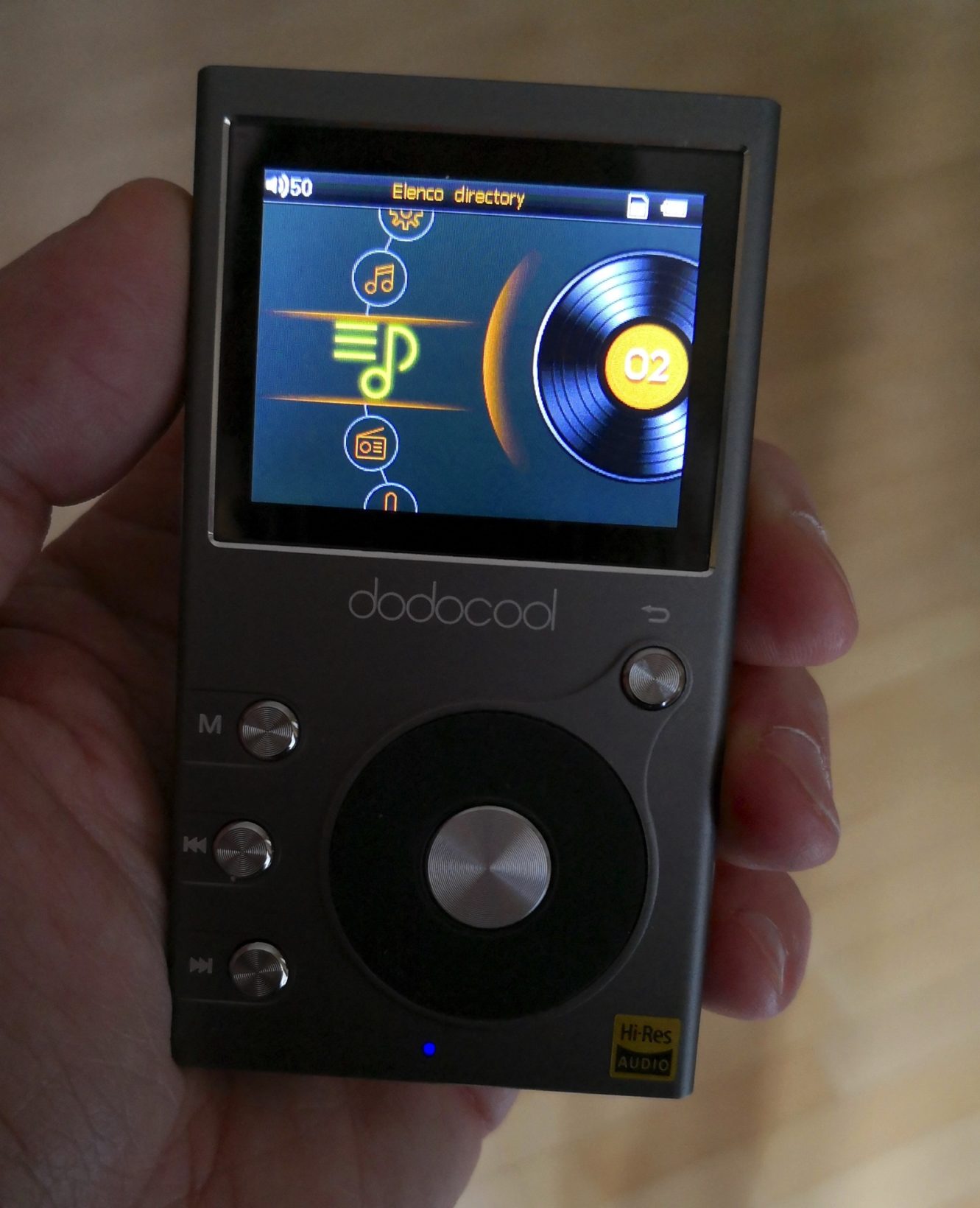 The screen quality is great and it looks really ultra-fine. The merit is the small size and the linear and colored interface. There are no problems for those with good eyesight but for the elderly there may be some difficulty. The protective mirror offers some reflections too much and when you are in full alone, even with the maximum brightness you need to shade with your hands to read the small display.
The screen quality is great and it looks really ultra-fine. The merit is the small size and the linear and colored interface. There are no problems for those with good eyesight but for the elderly there may be some difficulty. The protective mirror offers some reflections too much and when you are in full alone, even with the maximum brightness you need to shade with your hands to read the small display.
L The interface is quite intuitive, obviously not at the level of an iPod with the ring that had the center of the universe in the central wheel but you get used quite easily to the many buttons and to the not very smart semi-central jog that has some clicks that help to check the choice of go sub menu. The button in the center acts as “enter” or pause / play and the one on the top right from “esc”.
The other buttons respectively allow access to the menus with the options related to the various functions and the classic back and forth navigation options. The power button also has a secondary function: it wakes up the screen after a predetermined time (adjustable by you) otherwise the lighting gives way to a more saving and discreet darkness.
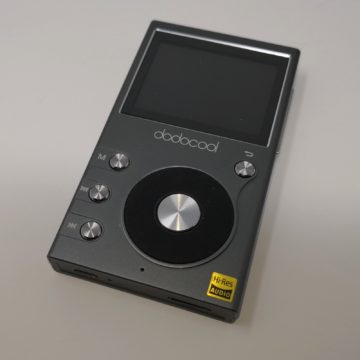 Here is the reader in dark gray livery
Here is the reader in dark gray livery 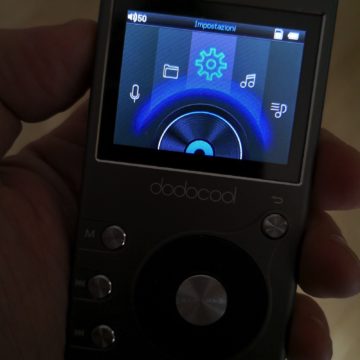 Two different looks for an interface that uses the wheel and the middle button for selection
Two different looks for an interface that uses the wheel and the middle button for selection 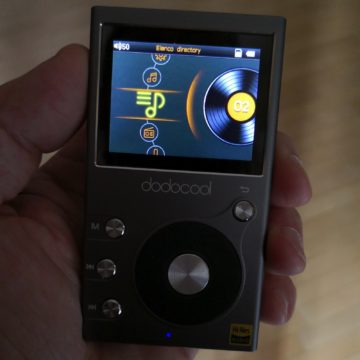 Here the icons are larger and more evident
Here the icons are larger and more evident 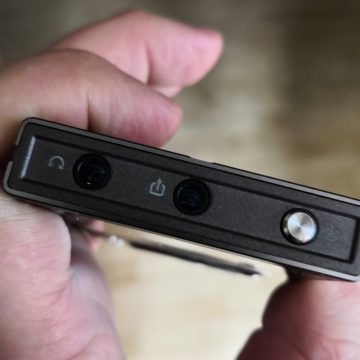 Headphone output and line output with the power button and wake-up button from the stop on the top
Headphone output and line output with the power button and wake-up button from the stop on the top 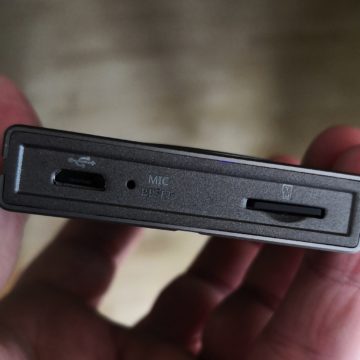 Micro USB socket, hole for microphone and reset and slot for SD card
Micro USB socket, hole for microphone and reset and slot for SD card 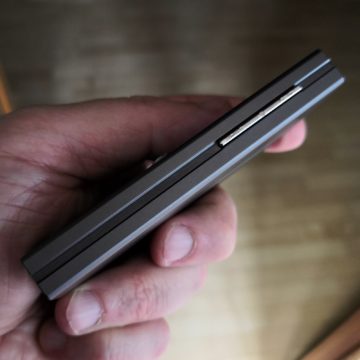 the rocker control for the volume … a bit slow in managing the levels
the rocker control for the volume … a bit slow in managing the levels 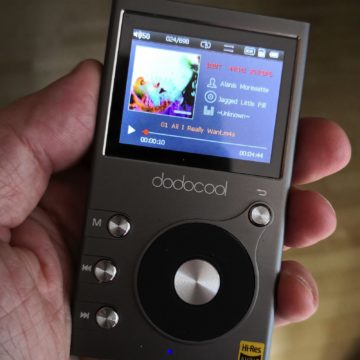 The information sheet on the track being listened to
The information sheet on the track being listened to 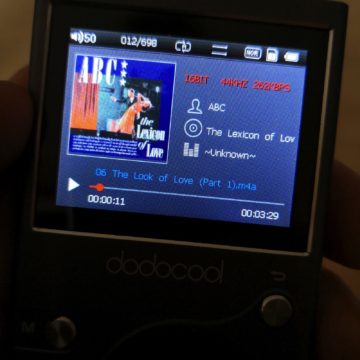 A detail of the sheet
A detail of the sheet 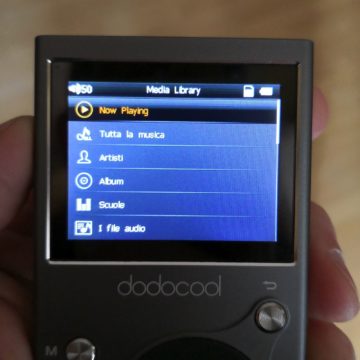 The translation is not entirely perfect … but the Italian is there. Has the musical “Genre” been translated as “Schools”
The translation is not entirely perfect … but the Italian is there. Has the musical “Genre” been translated as “Schools” 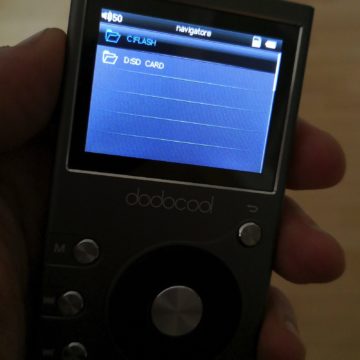 Internal memory or SD Card?
Internal memory or SD Card? 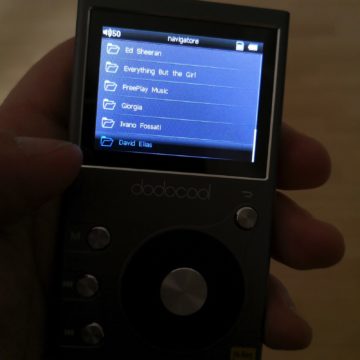 Here we are browsing among the authors
Here we are browsing among the authors 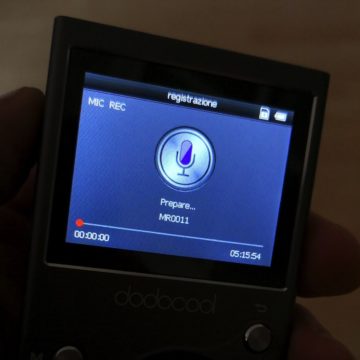 Recording is activated here
Recording is activated here 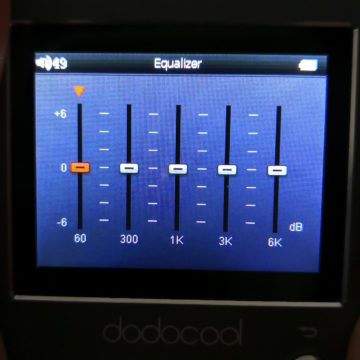 The 5-band equalizer
The 5-band equalizer 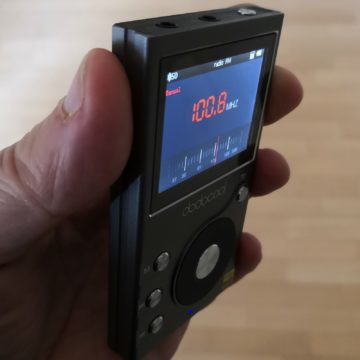 3/4 view
3/4 view 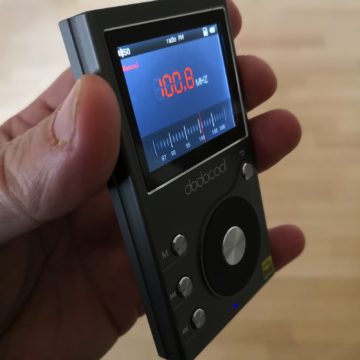 Classic look for the FM tuner
Classic look for the FM tuner
Internal memory and SD Card
The reader has a bit of a weird behavior that will somehow affect the way you use it. The songs that you will transfer to the internal 8G are classified by Author, Album, Artist etc .. automatically and without problems. You will then be able to choose the viewing mode you prefer and play them the way you would on iTunes or other music players. The songs instead of inserted on the micro SD card will be navigable exclusively according to the folder structure that you have prepared and will not be “registered” between authors and albums. This somehow pushes you on the one hand to keep the most recent random access music on 8 GB and to insert your favorite LPs or CDs into the additional memory in good order: then folders by artist within which you have other folders with the albums with the tracks inside.
With the firmware update of March 2018 the problem of the missing “census” of the SD content has been solved. By accessing the menu from the folder icon to the external tab and returning to the icon with the note and the menu, in practice, a content analysis is started which in a few seconds sorts your entire music library by author, album, song and genre. however, it seems good to keep it structured. If you want to listen to the contents of the 8 GB internal memory you must in any case repeat the operation since the system does not “add” the two contents.
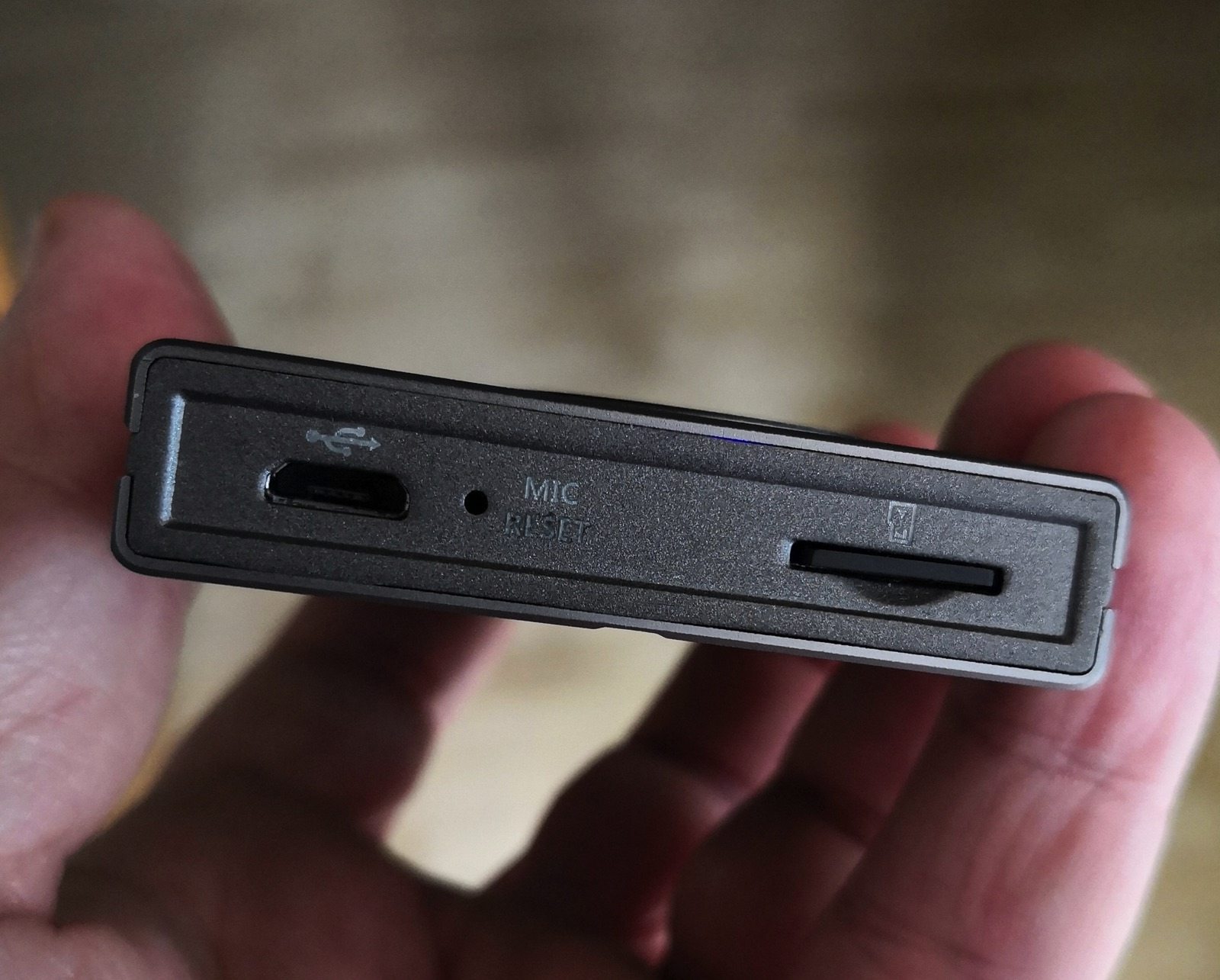 If you use iTunes this type of organization is already inside the “Music” folder of the application and therefore all you have to do is read the micro SD to your computer and transfer the folders of your favorite artists. By the way, the AAC format created by iTunes Match or the simple MP3 or uncompressed AAC archives you created on iTunes work perfectly on the Dodocool. What doesn't work obviously is the local music downloaded with the subscription to the Music service which is in any case protected and needs to be authorized by the player.
If you use iTunes this type of organization is already inside the “Music” folder of the application and therefore all you have to do is read the micro SD to your computer and transfer the folders of your favorite artists. By the way, the AAC format created by iTunes Match or the simple MP3 or uncompressed AAC archives you created on iTunes work perfectly on the Dodocool. What doesn't work obviously is the local music downloaded with the subscription to the Music service which is in any case protected and needs to be authorized by the player.
No problem even uploading files type .FLAC or other formats with low or no compression. The only “full” format that the reader does not seem to like, at least among those tested is AIFF but it is not even listed among those supported. In any case, the transfer to the player is very easy: connect it via USB and choose one of the two virtual disks represented by the internal memory and the one on the flash card and transfer everything to the respective MUSIC folder.
If you have iOS devices and you want the best compromise between high music quality and management with iTunes we advise you to convert your songs to Lossless ALAC : it is compatible with iTunes and allows for a lossless conversion of information from FLAC archives thanks to various specialized utilities such as FlacTunes.
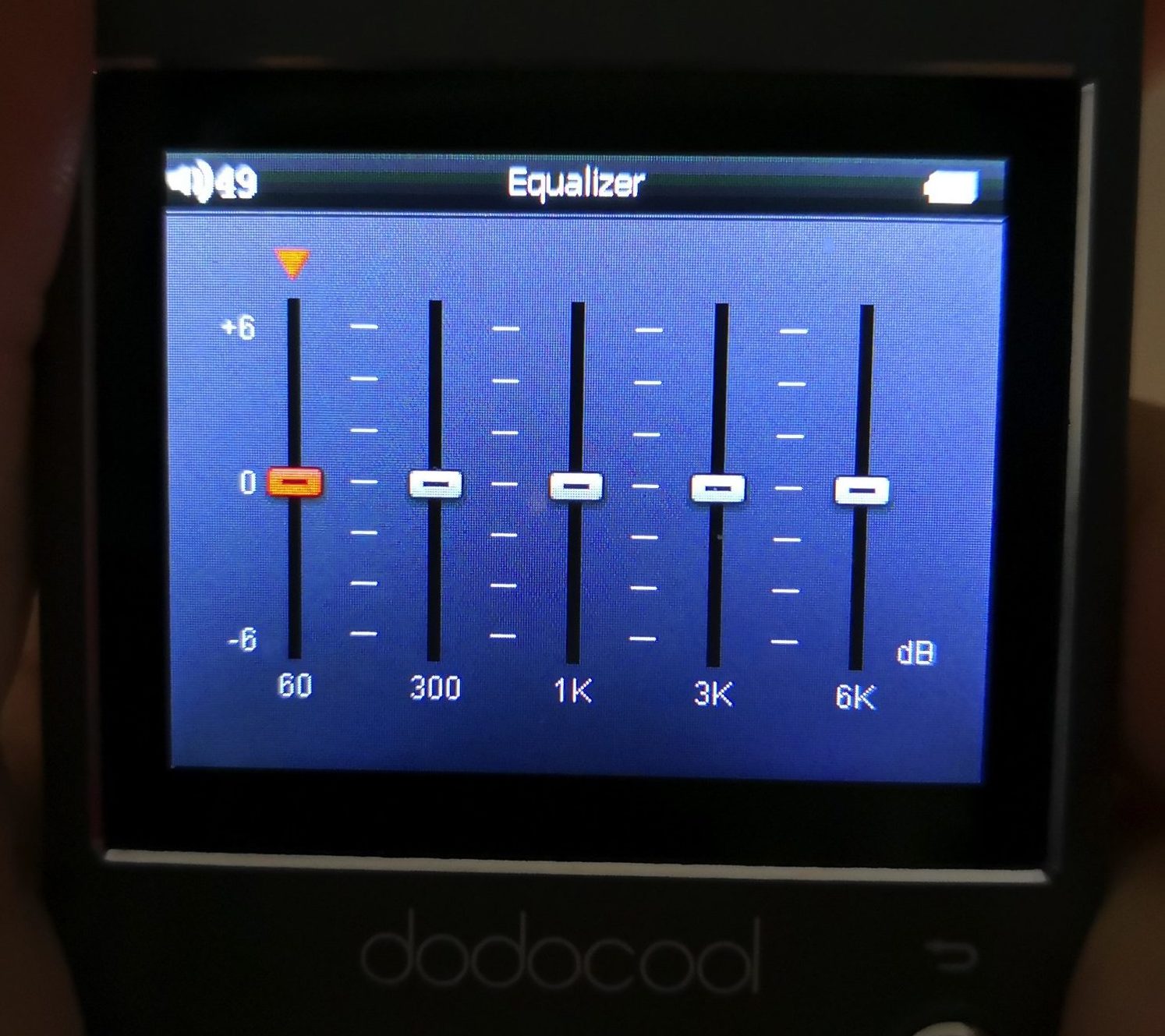 Equalizer
Equalizer
The listening quality is excellent without equalization but the player can be customized both with equalization presets and with a fairly fine adjustment (5 bands available) on the frequencies to better manage the hearing abilities of the listener and his eventual ones deficiencies (or those of the amplification system) on some areas of the range. The equalizer also has a familiar look for Hi-Fi enthusiasts.
Radio
On board we also find an FM radio with a selectable listening area (frequencies change from country to country) and the possibility of storing presets or searching (by pressing the forward and back buttons) for the most powerful stations. . As there is no internal antenna, the radio uses, as often happens in players and telephones, the headphone or amplification cable connected to the headphone socket itself.
The reception of the stations therefore depends on the position of the cable itself and for listening on the move there is certainly some problem. If, on the other hand, you can find a stable position and keep the cable always in the same position, your presets will continue to be effective.
The reception quality in these cases is good but be careful … You switch from another sound chip and the sound quality is not that of your music archives. In any case, the possibility to record broadcasts or clips and to open them later also on your computer is convenient.
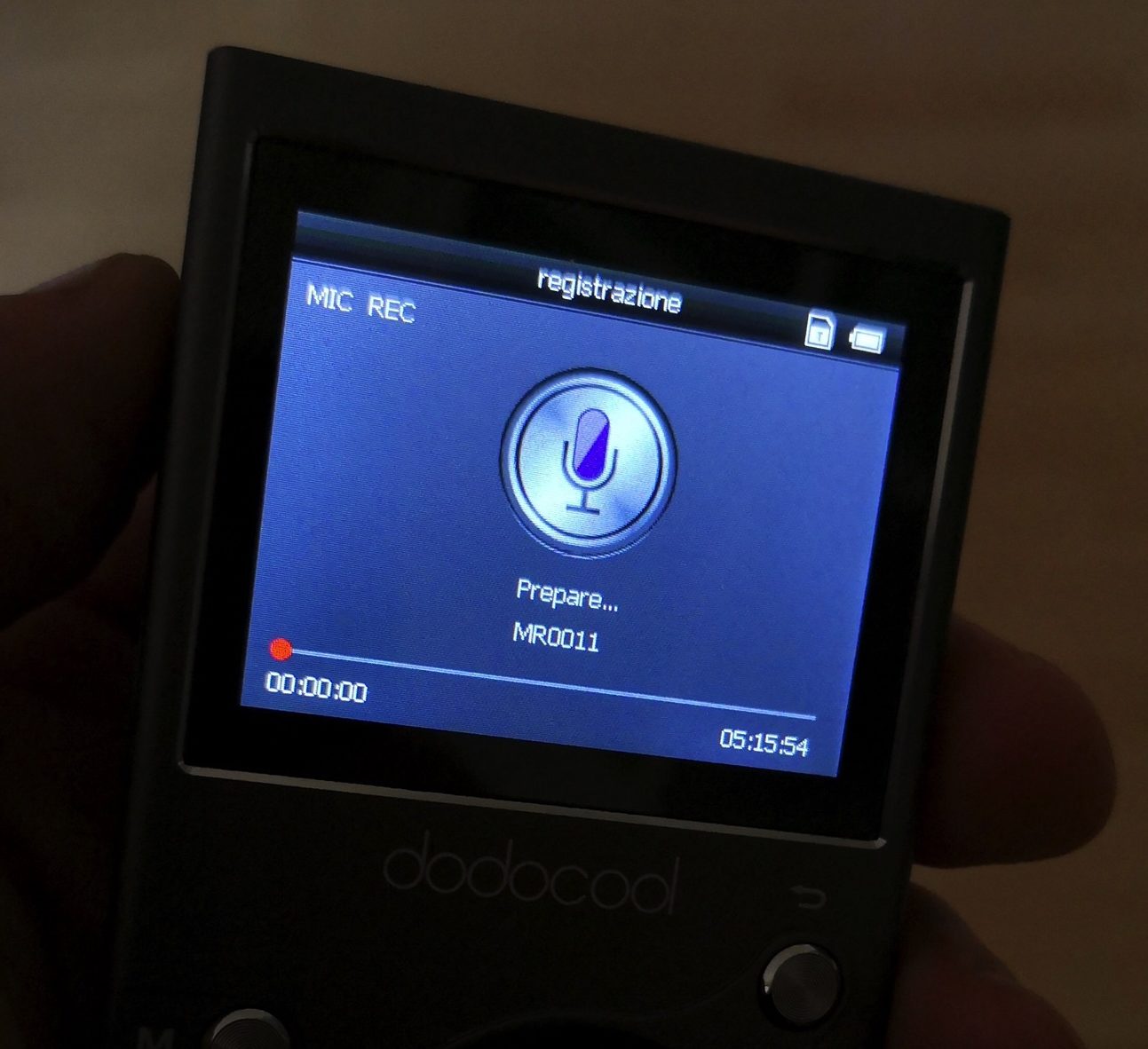 Microphone
Microphone
Again this is a convenient plus. The management interface is very basic since we will simply have a progressive numbering of the recordings. The recording quality has two levels and the higher one offers very good quality if we think about the small internal microphone. However, it is suitable for recording vocal notes and not for rock concerts or the like: the shooting range is limited in distance and width. The recordings, if you are careful to keep the bottom of the DA106 at about 20 cm from your mouth, are clean, before background noises and the voice has a good presence.
Line output
Finally we must mention the line output which seems to us a real plus for an object that due to its characteristics (management of songs on card, small display) is not designed only for casual listening but rather for listening sessions of entire works, LPs, CDs and therefore the connection to an amplification system (at home or in the car).
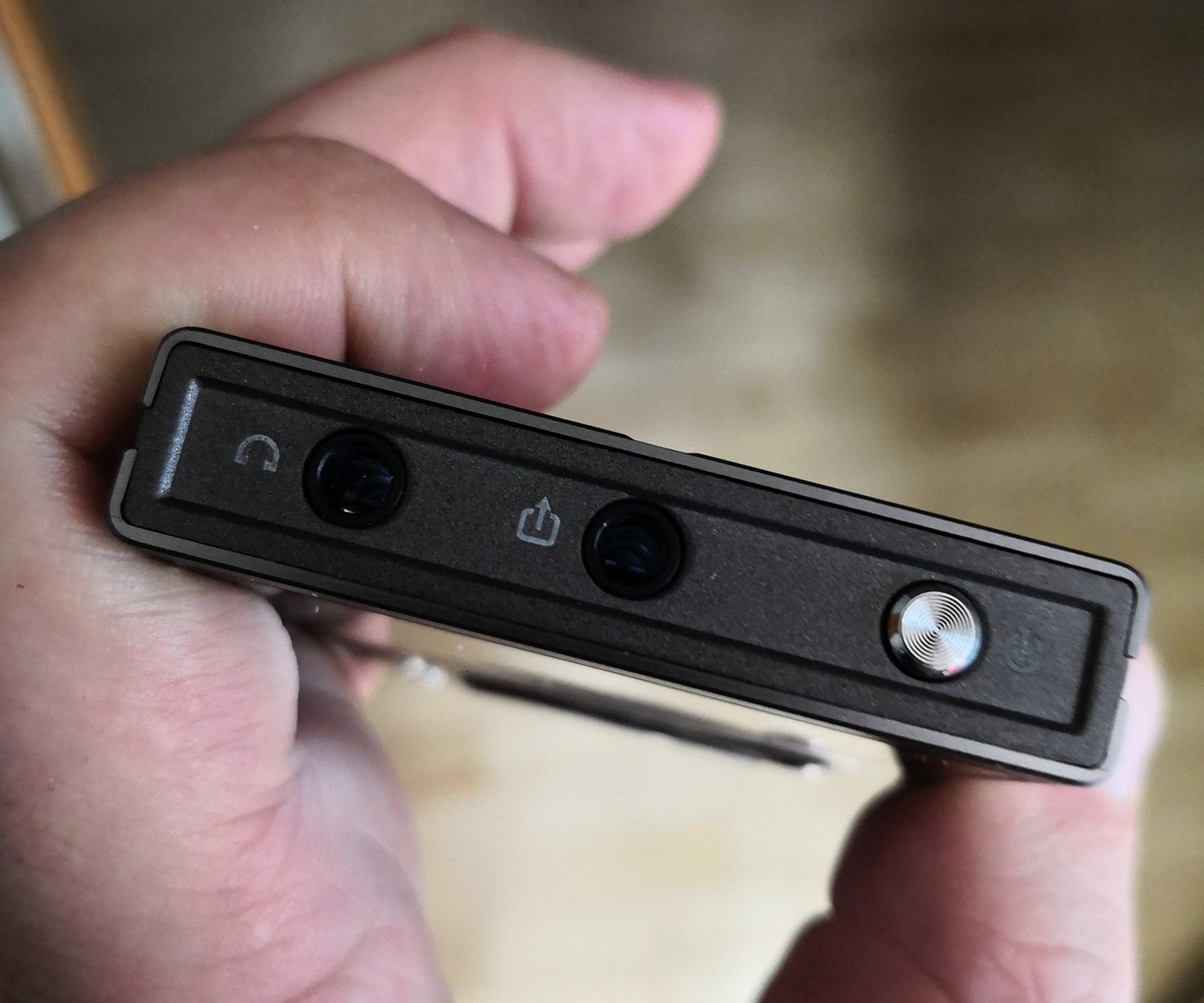
Skipping the headphone amplifier unit is definitely an advantage for the cleanliness of the sound and less distortion, leaving the downstream amplifier to manage a cleaner music source. Obviously we recommend a quality cable, perhaps with a good shielding.
Among other things, not having a telephone radio or even bluetooth, the device will certainly not have interference from the internal circuitry.
Listening and practical use
We have listened to the Dodocool DA106 in various areas and with various types of amplification: Hi-Fi systems of good quality, soundbars of medium-high class and small amplification for iPhone as well as headphones in the range of 200-300 euros: the dodocool has never made a fold both with 256K AAC files from iTunes and with excellent music archives in FLAC format or entire CDs “decanted” at 1411 kbps without compression in digital format. It can actually play 192kHz / 24bit archives but it is not easy to find tracks in this format and we will not go into the controversy here if the ear of the average listener is able to perceive the difference.
In the end we have zero background noise (at least in the systems that we have been able to use), excellent dynamics and the portability of a very small aluminum ingot. The content of the basic 8G was also recognized by various pre-installed car systems with the simple USB connection while for the music in the micro SD we used the line output and the selection of the album in the folders.
Basically it is an excellent tool to not fill the memory of your phone, to save battery or in any case also an excellent alternative source for your travels and transfers or simply for the music to which you want to access without taking out your old CDs or LPs.
We would have liked the system to classify Now the system also classifies the music on the additional card … firmware available in March 2018: see footnotes.
 Conclusions
Conclusions
An audio player designed for long-time listeners who want the right compromise between the music liquid and the highest quality of music perhaps transferred from their CDs and for those who want to travel and listen to music without consuming the batteries of their phone.
Excellent at home where the small display makes even better in terms of readability. Good quality of microphone recording for vocal notes. Listening to fm radio (with recording) is of lower quality than the rest but can be considered a convenient bonus.
Absolutely to be recommended even at the price of about 59.99 euros to which it is normally sold but it is possible to get it with discounts that bring it to a price of 39.99 Euro which represents an absolute opportunity.
Pro
Ultra-solid construction, direct line output, expandable up to 256GB, outstanding audio quality. Immediate reading of iTunes Match library transferred from Mac, compatibility with all available audio formats. Good microphone recording quality. 20 hour battery life as per specification.
Cons
Screen is small even if ultra-defined with some reflection too much in bright light. Does not manage playlists and classification on the micro SD Card.
Retail price
The Dodocool DA106 reader costs 59.99 Euro including VAT and shipping on Amazon. [Fine Aprile 2018] If you use the special discount for macitynet.it readers costs 39.99 Euro : enter the code UMNDWOMV during payment. In any case, the price is fluctuating and the quantity available is small. The discount may have a limited duration.
[amazon_link asins=’B072XKJRF6′ template=’GridMacitynet5′ store=’macitynet0d-21′ marketplace=’IT’ link_id=’05cfcf6e-3d60-11e8-a2b4-15c0138ffb19′]
[Note: the new firmware available from the end of March 2018 download it from this page and just unzip it and insert it in the main directory of the player, at the same level as the MUSIC and Voice folders. Once the player has restarted, the update will take place.
The firmware update erases the contents of the 8 GB internal memory as regards the MUSIC folder and it is therefore advisable to make a backup .
The latest version now allows you to delete the tracks on the micro SD card: select the track from the list and press the “M” key to choose the option that it is great if you have transferred music that is incompatible with the player. You can choose the direction of action of the wheel and a basic system for selecting your favorite tracks has appeared. The most recent firmware allows (as explained in the text) also to classify the tracks present in the additional SD card.
,,





